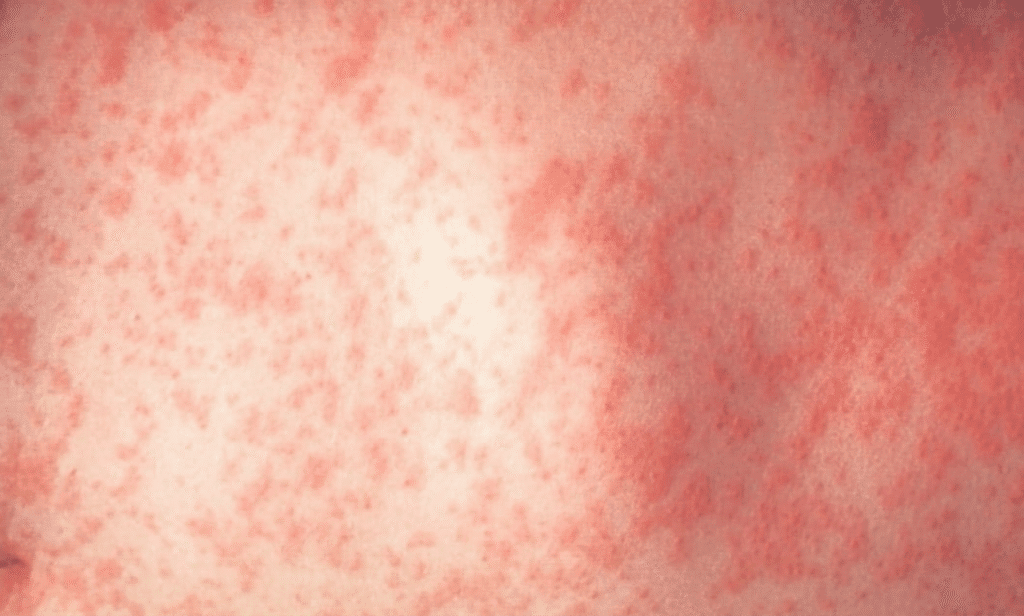
A tragic incident in Los Angeles County has highlighted just how serious measles infections can become, even years after the initial illness. Health officials report that a school-age child has died of subacute sclerosing panencephalitis (SSPE), a rare and fatal brain disorder, following a measles infection contracted during infancy. The child was too young when measles struck to be eligible for vaccination.
SSPE is caused by a persistent infection of the measles virus in the brain. The virus remains hidden and dormant for years and then begins to cause progressive inflammation and damage to neurons, eventually leading to severe neurological decline, loss of muscle control, cognitive impairment, seizures, and death. There is no known cure. The fatal nature of SSPE makes prevention through vaccination all the more critical.
Infants, especially those under 12 months, are at higher risk both for contracting measles and for developing SSPE later in life. In the reported case, the child was infected as an infant before the age at which the measles-mumps-rubella (MMR) vaccine is usually administered. Health authorities pointed out that while SSPE occurs in about 1 in 10,000 measles cases overall, the risk rises dramatically for infections in infancy, with estimates as high as 1 in 600 for very young infants.
The United States is experiencing one of its worst years for measles in over three decades. As of early September 2025, there have been 1,454 confirmed cases of measles in the U.S., with three deaths reported. Measles used to be declared eliminated in the U.S. around the year 2000, meaning there was no continuous disease transmission. But outbreaks seeded by both imported infections and gaps in vaccination continue to threaten public health.
Vaccination with the MMR vaccine, when given according to recommended schedules, remains extremely effective. Two doses of MMR provide about 97% protection against measles. For most children, the first dose is given between 12-15 months of age, and the second dose at 4-6 years. These guidelines are rooted in decades of epidemiological data showing high protection and public health control over measles when vaccine coverage is high.
Health officials emphasize that community immunity—sometimes called herd immunity—is essential, especially to protect those who cannot be vaccinated (infants who are too young, people with certain immune conditions, etc.). When enough people in a community are vaccinated, the virus has fewer opportunities to spread. In the case under discussion, the child would have depended on such protection.
Recent trends suggest that vaccination rates among children in the U.S. have slipped somewhat. According to a report from the Centers for Disease Control and Prevention, the proportion of U.S. kindergarteners with two doses of MMR dropped from around 95.2% in the 2019–2020 school year to about 92.7% in 2023-2024. That drop may seem small in percentage points, but because measles is so contagious, even a small dip in vaccination rates can lead to outbreaks.
Officials point out that measles can spread rapidly in under-vaccinated communities, and each outbreak raises the risk of long-term complications like SSPE. The latent nature of SSPE means symptoms may appear years after measles infection, making the disease particularly insidious. The loss of one life to SSPE is a reminder of measles’s lingering threat.
Experts recommend that parents ensure their children receive all recommended doses of MMR on schedule. For those travelling internationally, or in regions with ongoing measles outbreaks, extra vigilance is required. Health departments also encourage adults who lack documented vaccination or immunity to consult their healthcare providers regarding MMR vaccination.
In Los Angeles County, the health department has underscored the danger of measles for those too young to receive vaccination, calling SSPE “an avoidable tragedy” when vaccinations are underutilized.
The broader public health community sees this case as a wake-up call. As measles cases mount across both U.S. borders and globally, maintaining high vaccination coverage isn’t simply a matter of individual protection—it’s essential to safeguard vulnerable populations and prevent heartbreaking complications whose onset may come many years later.
In summary, the death of this child serves as a stark reminder that measles, once thought largely controlled in many parts of the world, can still produce devastating long-term consequences like SSPE. Vaccination remains the strongest tool we have: it not only prevents the initial disease but ultimately saves lives from hidden, delayed damage.
